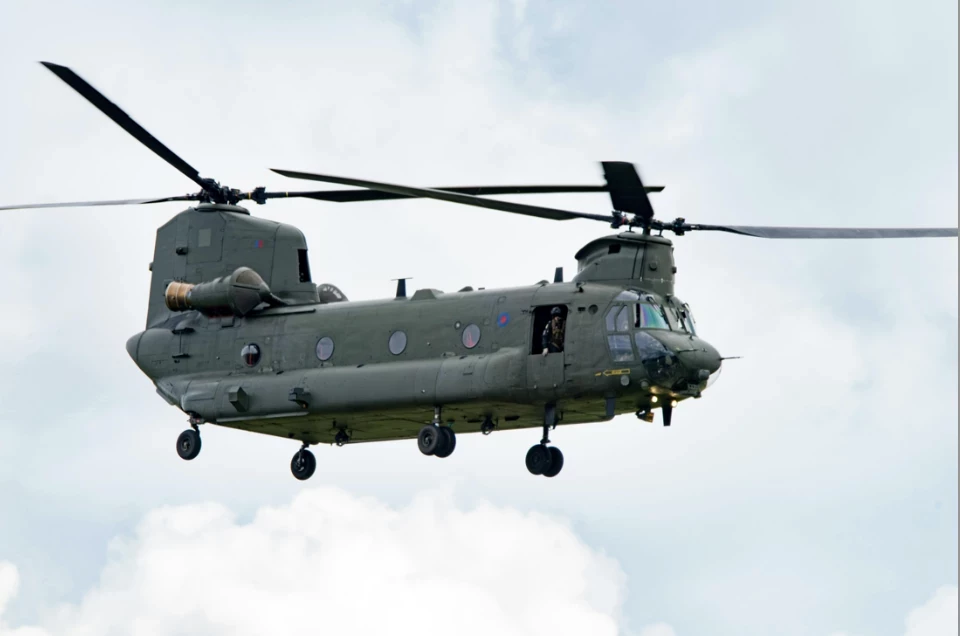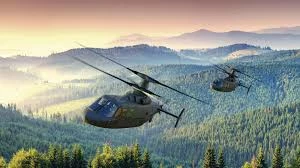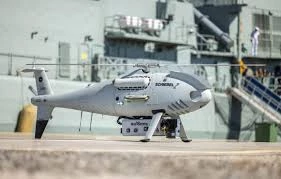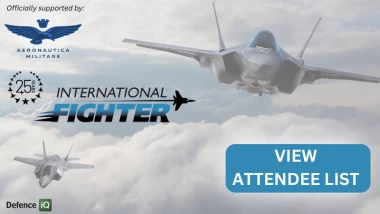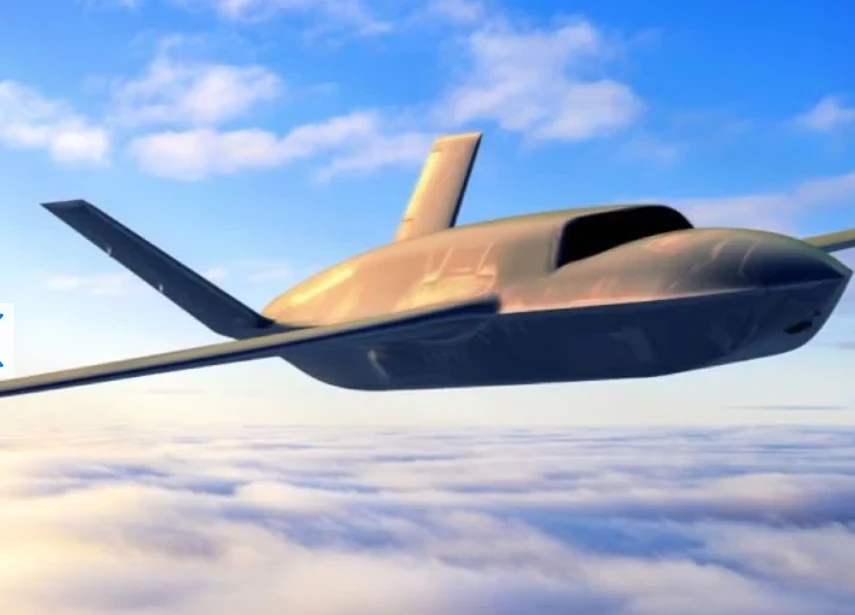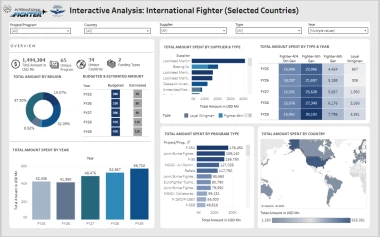General Atomics discusses Predator XP with Defence Industry Bulletin
Add bookmarkWe respect your privacy, by clicking "Download Your Copy" you agree to having your details passed onto the sponsor who may promote similar products and services related to your area of interest subject to their privacy policy. You have the right to object. In addition, you will receive our e-newsletter, including information on related online learning opportunities. For further information on how we process and monitor your personal data, and information about your privacy and opt-out rights, click here.
Image: Rory Jackson
The second Unmanned Systems Conference and Exhibition was held as part of the first Abu Dhabi Aerospace and Aviation Week. Defence Industry Bulletin took the opportunity to speak with James “Jim” Thompson, General Atomics’ Regional Vice President in charge of international strategic development for the Middle East and North Africa. DIB also spoke to Robert Walker, Director of Strategic Development, on the development of the company’s latest platform, the Predator XP, and on the work being carried out on the Predator B to conform to STANAG 4671 – the NATO Airworthiness Standard for RPA systems - on lightning and bird strike protection, non-destructive testing, and advanced composite and adhesive materials for extreme environments.
DIB: I understand the Predator XP is based on the original RQ-1A, and will be delivered to the UAE later this year?
JT: RQ-1A first flew in operation in Bosnia in 1995. It really was a game-changer in the world of unmanned air systems; prior to the Predator, RPAs - remotely piloted aircraft - were not known for their reliability. And they were basically flying on a line-of-sight datalink, which limited them to maybe, 100-120 miles from their point of take-off. So they had limited utility.
General Atomics, with the Predator, put a satellite control datalink in it, and that enabled you to go much further, because the aircraft itself at that time is flying for up to 25 hours. And the reliability was greatly increased. That system flew successfully - it’s still flying today. But it’s no longer being produced. The U.S. Air Force, our primary customer for the Predator RQ-1 - which of course, then, became the MQ-1 - stopped their procurement in about 2011, or 2010, when they bought the last one.
DIB: Why did they cease procurement of the platform?
JT: Well, they were buying our larger Predator B at the time. And they had been splitting their orders between the two; they decided to put all their money in one basket and go with the Predator B. A lot of reasons why. Number One – obsolescence; you’re better off investing in one platform. Well, the timing of that actually was very good for us, because we had been working on getting approval of the Predator XP for sales in this region.
And that happened at about the same time, 2010-2011. And when we shut down the production for the U.S. Air Force, that left all this capability - the composite, moulds, everything, the salinoids that we had set up for twenty years, we were able to apply it to the Predator XP. We didn’t have to lay anybody off or shut anything down.
DIB: And so, with the Predator XP, General Atomics took the opportunity to begin making improvements?
JT: We took the opportunity to completely redesign the aircraft from the ground up, in terms of improvements. We were limited by having the one customer being the U.S. Air Force, where, it really was ‘their design’. We couldn’t make a change - if we thought something could be improved upon, we could make a recommendations to the U.S. Air Force, but they didn’t want to make it a part of the programme of record, and then we weren’t allowed to change it. And so, the engineers at General Atomics had a long list of improvements that they wanted to make to the Predator that were limited until the Predator XP arrived - and everything, all of a sudden, came out of the woodwork.
DIB: What systems and components has the XP retained?
JT: We retained the power plant and the datalinks that were proven, robust - so we kept the Rotax 914 engine, but we improved the cooling capability for it. Especially for operating in these areas. And the datalink, the loss-link software - which is very important if you lose your link, proven over two million flight hours, airplane comes home on its own, you retain the link and you land - all that stayed. Some of the other areas that we kept included the radios, which is another very important part of the aircraft. We didn’t change out the radios; the communications links all stayed the same.
DIB: How about improvements to the subsystems? Given the technological advancements and changes in conventions since the late 90s, which other systems has General Atomics been able to take advantage of?
JT: We looked at our other aircraft, which is the U.S. Army Grey Eagle and the Predator B for the U.S. Air Force, and we had put in triple redundant avionics in those aircraft. The original Predator was single-string, so you basically had one of everything - if that one failed, then you could have some problems. Very reliable system, but nonetheless, our new aircraft had triple-redundant avionics so, if you had one fail, the other two will carry you home. We took that, and put it into the Predator XP.
DIB: The shape of the airframe has also visibly changed between the RQ-1A and the XP, has it not?
JT: We redesigned the tails, and made them a fixed-tail configuration, dual-redundant. So if you had one of your ailerons on the tail lock up or freeze, it didn’t make the airplane unflyable because each one has two. We added automatic take-off and landing capability to the system, which came out of our U.S. Army Grey Eagle aircraft.
Very important point: we added dual sensor capability. The original Predator only had the ability to carry an EO/IR camera. All of our other aircraft since that time also had a wide-area search radar system, called the Lynx radar, which General Atomics produces. It’s capable of Synthetic Aperture Radar (SAR) imaging, Ground Moving Target Indicator (GMTI); it even has a mode for maritime tracking. So the Predator XP has dual payloads. We added new winglets on the wings - the original Predator did not have those. We extended the wing length by about a metre, added the winglets, and that gave us quite a bit more endurance. Five percent more.
[inlinead]
DIB: So the winglets also contribute to the increased range of the aircraft?
JT: Yes. And they also work very well - we moved our antennas for the radio, the UHF, VHF, and we also have Automatic Identification System (AIS), which is a means of tracking ships - we put those in the winglets, which takes it away from the main body of the aircraft where we have a lot of electrical interference. It puts them out as far as you can from the main body of the aircraft. As you can see from our model, we have LED lights as well on those winglets. We even changed out the propeller. We did a design study on the propeller, we had about four or five different models built, ran them in wind tunnels for hours and hours on end to see which one was more efficient. The aircraft resembles the original RQ-1/MQ-1 Predator from the outside, because we retained the basic aerodynamic shape, but it’s actually fully designed, it’s our newest aircraft, it really is. Even though it’s based on the oldest aircraft, it’s now our newest aircraft.
DIB: And a full range of modern sensor options are available to operators?
JT: As far as the sensors go, we have an EO/IR, we can use WESCAM’s, FLIR’s, Raytheon’s... they all offer HD EO/IR capability; laser pointers, laser illuminators, range finders, truly amazing sensors. So you think back to the old days of 1994, you had an analogue system on there: a 14 inch gimbal. We’ve now gone up to almost a 16 inch size gimbal. So there’s been tremendous improvements in EO/IR camera systems.
DIB: UAVs are never static; development, as I understand it, is always ongoing, to keep systems up-to-date with all the capabilities modern technology offers, and to keep offering something new that competitors cannot. Can you share any details about what’s in the woodwork for the Predator right now?
JT: The one we’re working on today is a Traffic Collision Avoidance System (TCAS) for sense-and-avoid. It’s not integrated in what we’re delivering today, but it’s something we’re working on back at the factory. A lot of our customers - especially in this region where countries tend to be small and they don’t have a lot of segregation between the military and their commercial aviation. And right here, in the UAE, Al Bateen base is a multi-use military and commercial base. You go to Bahrain, Kuwait, Qatar - they’re all very small countries, and there’s really not a separation. They fly their military aircraft the same place they fly their commercial craft. So we’re working on integrating a TCAS: we have transponders on the aircraft currently, the TCAS will help greatly. It’s something we hope to have available in our systems in the next year or so.
DIB: How long has GA been working on its TCAS?
JT: TCAS systems are in existence today - many aircraft, manned aircraft, have TCAS systems on board. We’re not developing it, we are integrated an existing TCAS onto our aircraft. I don’t know who the OEM is for that system, but we’re integrating it onto the Predator XP. But the Due Regard radar is a General Atomics product that goes beyond a TCAS system.
RW: We’re expecting to have that available by the end of the year. TCAS integrated into the XP.
JT: One clarification - the Due Regard radar, right now, is being integrated onto the larger aircraft; the Predator B, not the XP. I would like to think in the future, that is a potential thing to do, but there’s size, weight and power (SWaP) issues that have to be overcome, because we have a smaller platform with less space on board. So at this point in time, the Predator B aircraft that we’re selling to the U.S. Air Force, foreign allies, Homeland Security, that is the aircraft we’re integrating the Due Regard radar into, in the nose. TCAS is what we’re integrating onto the Predator XP.
DIB: While we’re talking about the Predator B, I understand recently there was an announcement – the first flight following the extension of the wings on the Predator B, which successfully brings greater range endurance to the UAV. Will there be any upgrades to the engine, fuel tanks, or datalink, to better accommodate this increase in range?
JT: I personally don’t know about the engine or datalinks...fuel system, potentially, by having a wingspan that’s about 13 feet longer than the standard Predator B, since we do use wet wings – we have fuel in the wings - there’s potential for adding more fuel to the wings.
RW: The programme that we have in development for delivery in...let’s say 2018, right now is the certifiable Predator B configuration. And the certifiable Predator B was designed specifically for international customers, specifically to comply with a host of different airworthiness standards across Europe; that’s going be extended into other countries as well. The idea behind the extended range and the 13-foot longer wing is that that’s essentially the first step in the development of the certifiable configuration.
JT: So it increases the endurance from about 27 hours to over 40. Which is significant, but also helps with short-field take-off and landings. It also has some lightning protection that we’re incorporating onto these long-wings, so as Rob said, it’s a step towards a certified Predator B.










